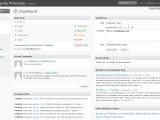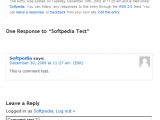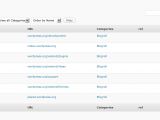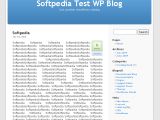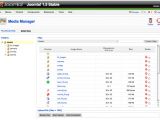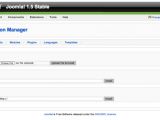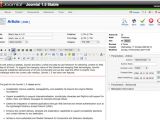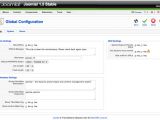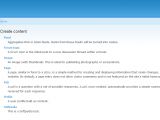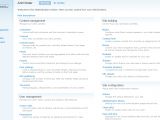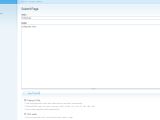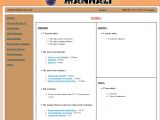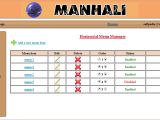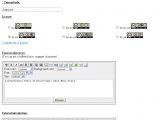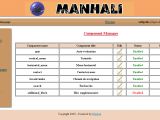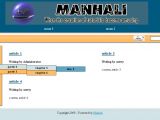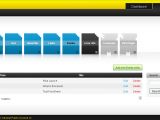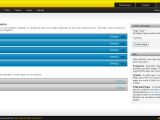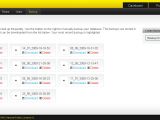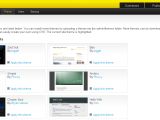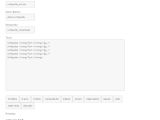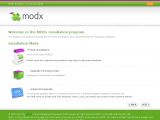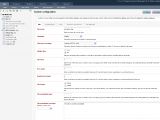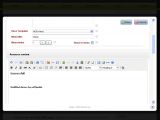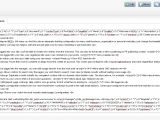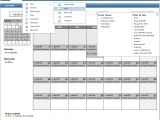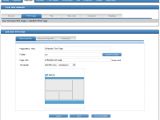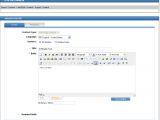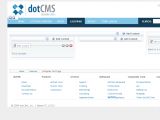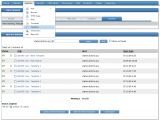I wrote this editorial after the recent nominees for the Open Source CMS Award from Packt were released to the public a few weeks ago. After passing through a testing, updating and indexing process with all the nominees, some useful tips, details and conclusions can be presented to help readers in their voting process and maybe in choosing one of them for future projects.
Open source has long been the darling of all developers. Even if money is scarce, and mostly missing in these projects, developers continue to commit their work force to projects that sometimes end up revolutionizing the web. You don't think so? Well, then you probably never discovered or used a WordPress-powered blog, a Joomla!-based website or installed free software on your computer. There are many developers or designers out there that will openly admit they knew nothing about coding and development until they installed Mambo (which later split to Joomla) and tried to build their very own website.
Fooled by the easy interface, they thought that web-design was “that easy” and started to read, learn and tweak more on their little CMS-powered website. Many liked it and learned a web programming and scripting language. Many didn't. But that is what open source and CMSs did to the world of web development. It brought more enthusiasts to it, more people delighted by the great functionality and wanted to build even more on it. Maybe this is why, this year, Packt introduced an award called Hall of Fame Award that honors Drupal and Joomla! developers that continuously work on new themes and extensions for those pioneering applications.
Now, let’s get to the facts. We will start with some of the bigger names.
WordPress
Presently our favorite thanks to its huge plugin and themes database, development on the blogging platform has been shot out of the canon since blogs and Twitter became cool. Development for the platform has also seen a huge leap thanks to the jQuery JavaScript library and the huge list of tutorials that the web has seen recently. You can't search for a JavaScript or PHP tutorial these days without stumbling over an example implemented on WordPress.
Big web marketplace websites like Template Monster and Envato's ThemeForest have also been invaded by countless WordPress templates spurred by the rise in usage of the platform. As a note, at this moment, the most expensive products on ThemeForest are WordPress templates.
The good Extraordinary large plugin and theme database makes website or blog building a child's play. The admin interface is also so easy to use that there is absolutely no problem in managing the website. Many tutorials and documentation on how to manually customize the core to add, build or extend functionality.
The bad Its own success. As big companies started adopting the WordPress CMS for their websites, hackers had a field day in damaging it many times. The positive thing about this is the WP community that reacted immediately and issued security releases in record time.
The truth We warmly recommend it not only for blogs, but for any kind of web-related project.
Joomla!
It is our former favorite CMS. We had to leave it because of the complicated customization options. It's a great CMS, but modifying the core code for WordPress is a thousand times easier than messing around in Joomla's backyard. After winning the first Packt Open Source CMS award back in 2006, it narrowly lost the 2007 and 2008 awards to Drupal. A major player on the web, Joomla is supposed to be installed and powering approximately 1% of all the websites on the Internet right now.
The CMS is widely recommended to noobs around the web thanks to its easy to use and intuitive interface. We had no problems with it during testing, and for about four years since I've been using it, it never had a crash or bug.
The good Great support from the community. Joomla has probably the largest database for extensions, so there will be no problem in finding something useful for any kind of project. You will also have at least one friend that previously worked with it (that's how big it is), so help can be found anywhere.
The bad Lack of extensive documentation and tutorials. There is a lot of documentation, don't get me wrong. But only for simple usage and administration tasks. Built-in components. Maybe Joomla 1.6 will fix this problem, but as all developers know, time is what we don't have. There are a lot of components for Joomla out there, but few are included in the standard package. A way to fix this problem is that the guys at Open Source Matters Inc. could provide an extended install package for users with less time to spend on community websites searching for mere standard components and modules.
The truth This is a top solution in its field and if you don't believe us, check Elance Work Index, a study on online web-related freelance work, that has Joomla development skills well ranked over Drupal and any other CMS (WordPress is number one in this rank too).
Drupal
Crowned many times as the king of open source CMSs, Drupal is loved especially by inexperienced programmers thanks to the structured and simple code used for the core engine. Modules can be easily added, and if you know PHP, they can be written fast if they don't exist.
The good Easy legible code. Lots of community support. Many Drupal components just laying around the web for free or commercial usage.
The bad The interface. Where is the WYSIWYG editor? That is what first struck us at Softpedia. Unbelievable that in the days of Web 2.0, some CMS applications don't have included in their standard package a rich text editor. Very poor interface even with the RTE nevertheless. Graphics. Very basic. Mouse-click management in the backend. There is just too much clicking in the backend interface to get to a certain administration page or to activate a certain feature. Joomla had a better idea with its drop-down suckerfish type of menus for increased access. Some page loading problems related to the cache and speed. Also encountered by the guys at CMSReview.
The truth We recommend it to hard working programmers with a lot of time on their hands. You will have a lot of customizing to do to it before releasing it on the web.
Manhali
Being nominated for the Most Promising Open Source CMS Award, it gave us the warning that it is still not a premium product, so we will be gentle on our review.
Even if in its early stages of development, Manhali comes with SEO management options, component handling, internal messaging system and very good user, file, frontpage and article management.
The good Good targeting. Concentrating on tutorial-based content, the application does right to its purpose and provides various tools when presenting how-to content. Proper thought process was put behind the code and behavior of the platform. Easy to read, understand and manage.
The bad Found it impossible to access the admin interface from the frontend. A link would be helpful. (To access it, just add '/users/' to your homepage URL). The file manager provides a good way to upload files to the website, but can't list all previously uploaded files. So note that file path before navigating away from the page because you won't see it again.
The truth We recommend it for tutorial or how-to websites only. Even so, there is still a lot of work you will have to do in updating the graphics for it, since the style is not even close to the Web 2.0 graphics currently considered as a minimum for any modern website.
Pixie
Another nominee from the Most Promising Open Source CMS category, this one blew us away, providing just a great tool for building simple websites. As the plugins, modules and themes repository continues to expand, this will be a sure contender for next year's main award.
The features list includes graphic installer, multilingual, backup manager, file manager, RSS integration, WYSIWYG editor and many more.
The good A+ graphics and GUI Lightweight. Under 2MB in size
The bad It took a while to figure out how to install plugins and modules. A web installer might be a good idea for future releases. Small community. Forgivable, since it is just a start up, but might be a problem for complex websites where someone could need some help.
The truth Unless you are building a very simple and basic website, it is not (at this moment, we hope it will be) recommended using it in complex websites since plugins and modules are in a small number. If the client who uses the website is not web-inclined, it will be probably a good idea to use the platform just for its easy-to-understand interface. Using the “it's not rocket science” philosophy might have assured the future success of this CMS. Very good.
RedaxScript
It looks very modern, but disappoints in functionality. There is also room for improvement, since it’s a new entry and nominated for the Best Promising Open Source CMS category, it will probably have more features after development. The future looks good for this one too.
The good Modern graphics Lightweight. At an astonishing size of only 145kB. Fast
The bad Backend functionality. Not the strong point. It looks shiny, but fails when a regular user tries to use it. How can we install extensions (called “extras” on this platform)? Are there any? The backend interface and especially the menu looks a lot like the standard template, so you will probably get lost numerous times between them. A hint for future developments.
The truth We might have to wait for later releases of this platform for a version that could be used by people from outside the programming world. It can be used without concern for lightly structured websites, but don't try to build Yahoo on it. It builds websites pretty fast nevertheless.
MODx
This might be the most developer-inclined CMS of them all. The platform provides so many modules, extensions, templates and tutorials that, in our opinion, it is the most dangerous contender to the trifecta formed by WordPress, Drupal and Joomla!
On the verge of making it big, MODx provides many tools to build modern and very complex websites with a huge array of options varying from SEO to graphics.
The good Database back-up tool. Fast and to the point. Great documentation page Real-time resource editing directly on the website's page. Great intuitive admin interface, with many customization and administration options.
The bad Found it hard changing the website template. Hard but not impossible.
The truth This is the closest thing to Joomla or Drupal you will ever get. What is left now is only for a world-wide adopting of this resource. An increased community activity is what it lacks at this point in order to make it big.
dotCMS
Listed as a nominee for the Best Other Open Source CMS, dotCMS is a Java-powered CMS that just blew us away during testing. Again restating the superiority of Java next to any other language, this platform brought some unique features that we didn't see in any other CMS.
We liked most the page layout engine that lets developers choose or build their own page layouts using an interactive real-time editing technique.
The good Comes with a Windows installer. Integrated modules for e-commerce and CRM Form builder Report generating Great templating engine Real-time editing Internal calendar that can be used as an messaging system Built in Java, but still a tool for web developers.
The bad No community Very few extensions and templates.
The truth Because of its integrated e-commerce and CRM modules, it is strongly recommended for complex business websites, but be careful and check if all the available functionality of your project is covered by the available plugins. If not, we recommend something else.
Other notable mentions go to TYPOlight, XOOPS, DotNetNuke and SilverStripe.
These are just o few of the CMS platforms up for this year's prize, the list of nominees and voting platform can be found here, while a list of download links for all of them can be read in this article.
Voting is still opened until October 30, 2009.
UPDATE: You can read about the winners of the award in this article.
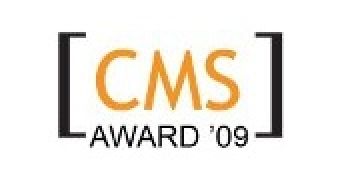
 14 DAY TRIAL //
14 DAY TRIAL // 
